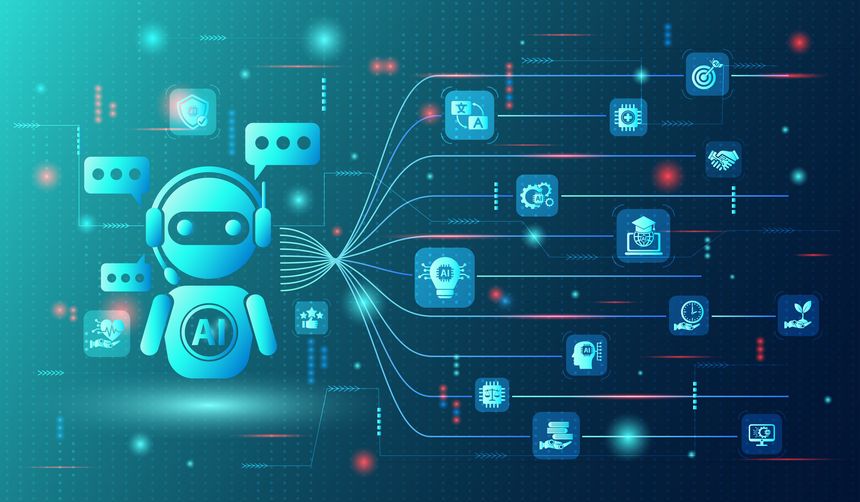We were excited to speak last week on the mainstage at the Association of National Advertisers Masters of Marketing Conference in Chicago about agentic artificial intelligence (AI) in advertising. Our presentation, “When the Ad Writes Itself: Navigating the Legal Frontier of Agentic AI in Advertising,” discussed how agentic AI—systems that act with autonomy to achieve complex goals—is rapidly transforming how digital ads are created and how campaigns are automated and optimized. As this technology moves from science fiction to reality, advertisers and their legal counsel face new opportunities and challenges as they take advantage of the many benefits. For those who missed it, here is a high-level summary of what we discussed:
What Is Agentic AI?
Agentic AI refers to autonomous systems that don’t just follow preset rules or respond to prompts but rather act with “agency.” AI agents can plan and execute workflows to achieve a goal set by a human but with minimal human supervision. Unlike traditional generative AI, which creates content in response to human prompts, agentic AI determines what tasks must be completed to achieve a goal, collaborates with other agents across multiple applications and learns from its outcomes to improve future performance.
In short, agentic AI doesn’t just generate content—it makes decisions, adapts to changing environments and can operate across multiple applications.
How Is Agentic AI Used in Advertising?
For media planning and buying, agentic AI can automate ad placements, audience targeting, budget allocation, campaign management and performance measurement.
With respect to creative services, agentic AI can automate product research, generate dynamic ads in real time that are personalized to the viewer and respond in real time to live events. Examples include ads that change during a sporting event (such as by including a congratulatory message at the exact moment a team wins) or AI influencers that engage audiences across social media by autonomously creating content and engaging with followers.
What Could Go Wrong? The Legal and Practical Risks of Using Agentic AI
While agentic AI tools are powerful, they also raise some important risks, including:
- Hallucinations and Bad Data: Generative AI might give a wrong answer, whether due to bad or misinterpreted data or AI-generated hallucinations, but agentic AI can take the next step and actually act on that wrong answer. This could potentially result in harm like wasting media budgets on poorly-placed ads or displaying the wrong ad creative.
- Security Risks: AI agents often connect across many applications, making them attractive targets for exploitation by hackers.
- Transparency: Agentic AI systems are often “black boxes,” making it difficult to identify and track how or why decisions are made.
- Compliance: Agentic AI systems must comply with all traditional advertising, privacy and intellectual property laws, as well as emerging AI-specific regulations. Because AI agents make decisions autonomously, appropriate human oversight is necessary to ensure that the decisions they make are compliant with law and the advertiser’s policies.
Guardrails, Oversight and Intervention
Fortunately, these risks can be managed. We suggest using a framework similar to how advertisers address risk when delegating authority to their agencies to purchase media or other services on the advertiser’s behalf, where we set the scope of authority for the AI agents, rules for how the agents make decisions and human intervention points to supervise them.
- Scope: First, define what the AI agent is permitted to do (e.g., purchase media, create personalized ads) and what data or platforms it is permitted to access.
- Rules: Next, set parameters for decision-making (e.g., budget limits, data usage restrictions, content guidelines and any requirements imposed by laws applicable to the use case).
- Human Intervention Points: And finally, identify when humans must review, approve or intervene (e.g., before major purchases, when certain thresholds are met or for sensitive content), and ensure there is ongoing supervision and review of agents’ actions to ensure the safeguards are working as planned.
Key Takeaways for Legal Counsel
- Mitigate Risk of Agentic AI Systems: Use the framework outlined above to define the agent’s scope of activity, set rules and ensure human intervention and supervision.
- Track Developments: Even though agentic AI is already having an impact on the advertising and media space, the technology is still in its early stages and evolving fast. (And let’s not forget the rapidly changing legal landscape surrounding AI as well.) Lawyers should stay apprised of new use cases and the legal, security, transparency, authentication and other issues that will come along with them. For example, we think consumer adoption of AI agent-initiated purchasing tools will be an important new development impacting advertisers soon.
- Work Closely with Technical Teams: Legal teams should work together with their technical teams who will be responsible for setting up the AI agents to ensure that they are programmed with the appropriate scope of authority and rules to ensure legal compliance.
- Stay Nimble: Because the legal and technological landscape is changing so quickly, lawyers must regularly review processes and update as needed to keep pace.


/Passle/63ef8bdcf636e911c850090e/SearchServiceImages/2025-12-23-00-05-46-647-6949dcda001b94fa034f93e3.jpg)
/Passle/63ef8bdcf636e911c850090e/SearchServiceImages/2025-12-22-02-27-56-589-6948acacb33335af7dc2b3c4.jpg)
/Passle/63ef8bdcf636e911c850090e/SearchServiceImages/2025-12-17-19-43-26-767-694307dec311190ddb9c82aa.jpg)